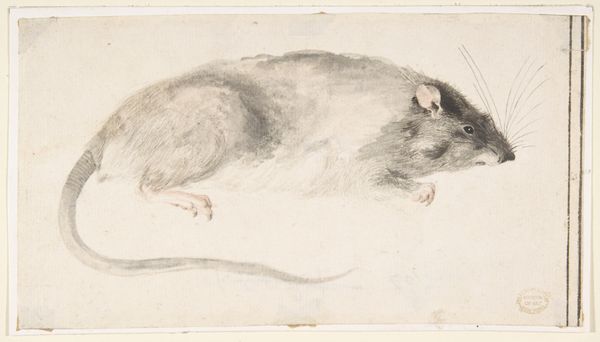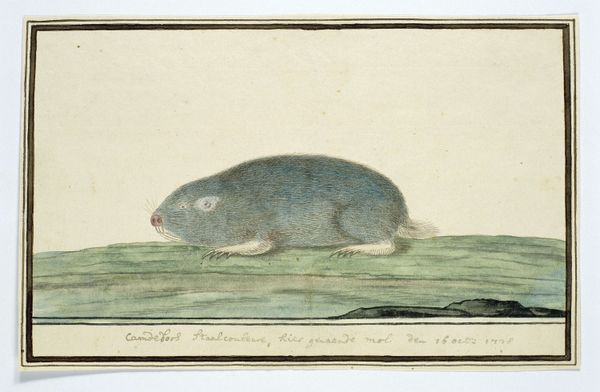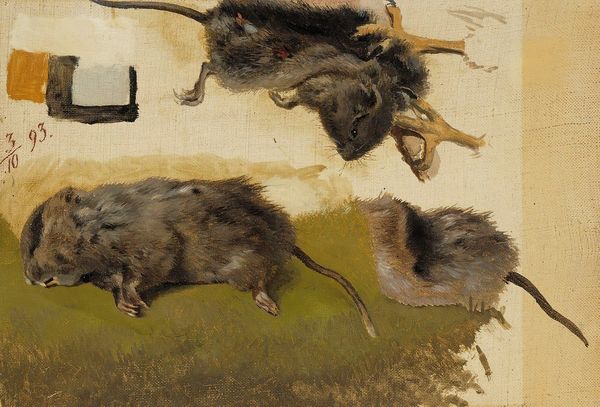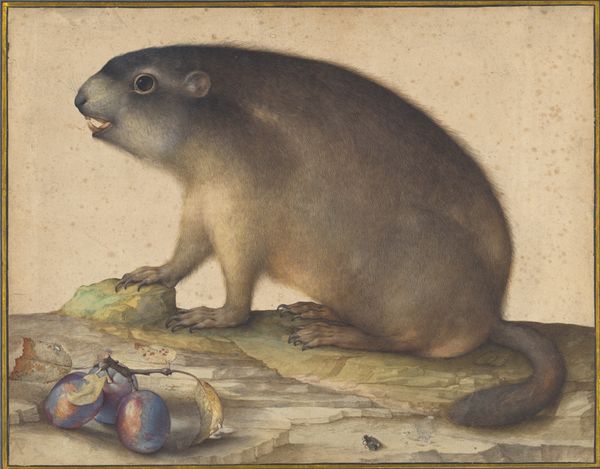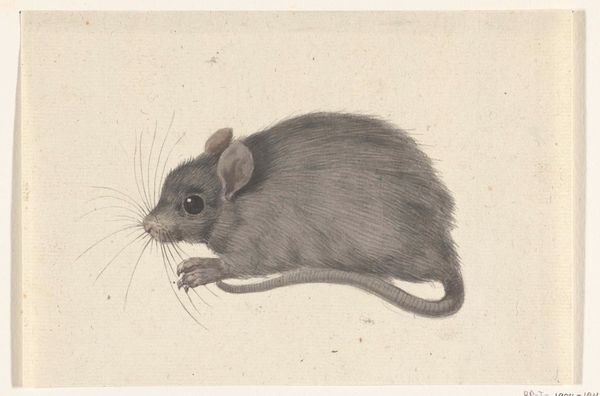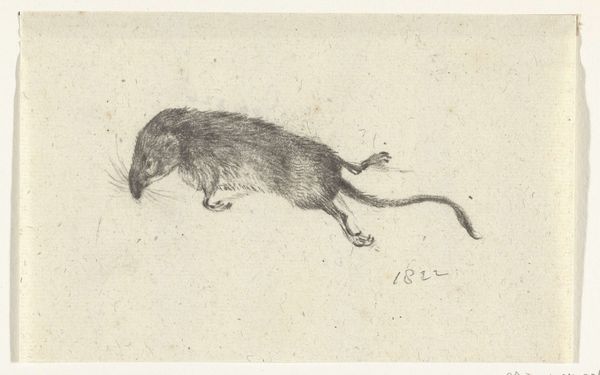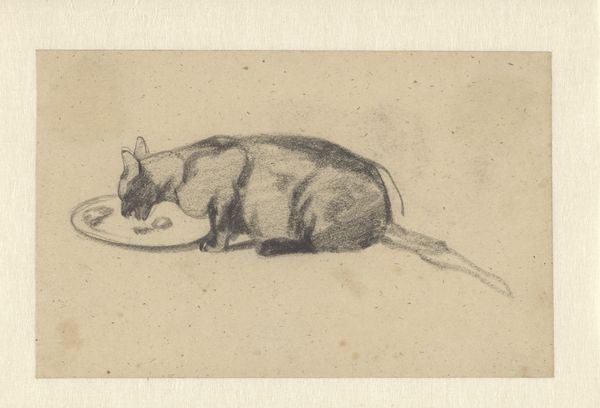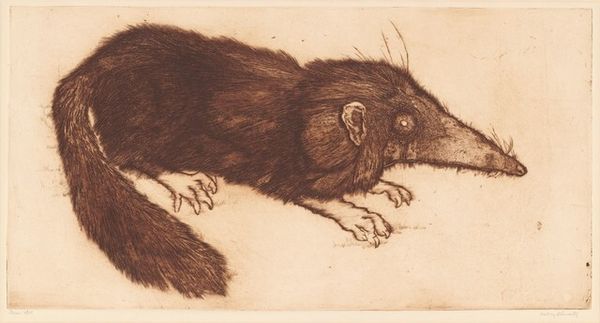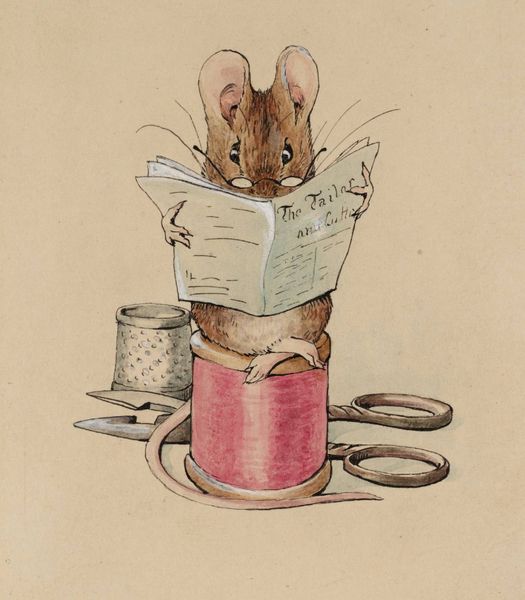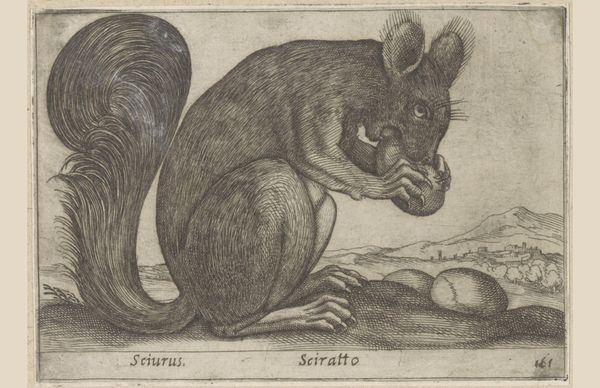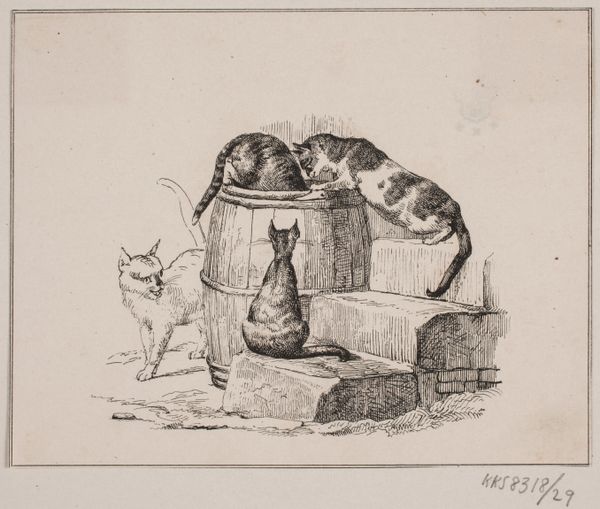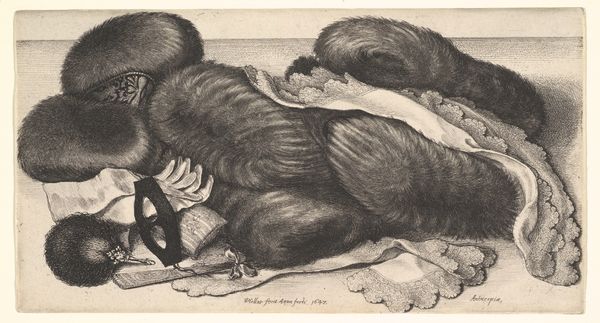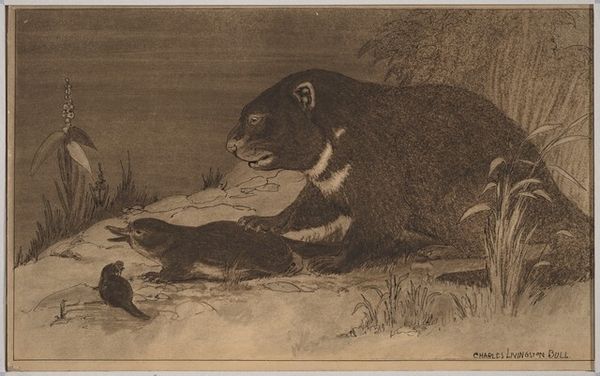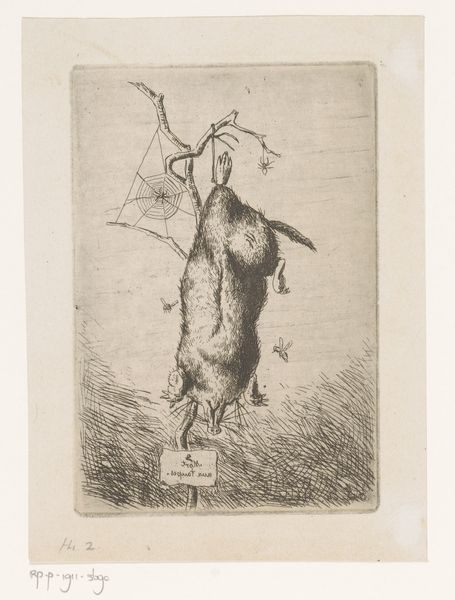
#
toned paper
#
water colours
#
possibly oil pastel
#
oil painting
#
coffee painting
#
underpainting
#
painting painterly
#
watercolour bleed
#
watercolour illustration
#
watercolor
Dimensions: height 89 mm, width 123 mm
Copyright: Rijks Museum: Open Domain
Editor: Here we have "Two Mice," created in 1594 by Joris Hoefnagel. It looks to be rendered in watercolor. There’s something so delicate and yet… a bit unsettling about it. The one mouse seems almost proud as the other melts in to the canvas! What do you see in this piece? Curator: Well, immediately I consider the context in which Hoefnagel was working. This was a time of burgeoning scientific inquiry, yet also a time when animals were heavily laden with symbolic meaning. Consider the Latin inscription, "MVS NON UNI FIDIT ANTRO" above, what might it suggest about trust and deception during a politically turbulent period? The role of imagery wasn’t merely decorative, it was often deeply intertwined with political and social commentary. Editor: So you're suggesting this seemingly simple depiction of mice could be commenting on something larger about society? The role of 'mice' as 'sneaks?" Curator: Precisely. Natural history illustrations were highly prized, but were more than objective records. Who controlled the creation and dissemination of these images and what biases might they contain? Think about the social anxieties prevalent in 16th century Europe – anxieties about social order, about health. Mice, as carriers of disease, could easily become metaphors for broader societal ills. Also, this artwork ended up at the Rijksmuseum... What social forces were at play when it ended up in its public collections? Editor: That is interesting… It’s amazing to think this cute painting could be tied into the wider issues of the time. Thank you for enriching my knowledge of social studies through this artistic piece! Curator: My pleasure. Reflecting on these points can really deepen one’s appreciation, no? Every artwork has stories and insights!
Comments
rijksmuseum about 2 years ago
⋮
This drawing was specially made by Joris Hoefnagel for his friend Johannes Muisenhol from Frankfurt. The scene refers to his surname (mouse hole), while the extinguished candle and the gnawed walnut stand for the transience of life. Symbolism played an important role in the 16th century. The artist also had a keen eye for the faithful depiction of the mice.
Join the conversation
Join millions of artists and users on Artera today and experience the ultimate creative platform.
